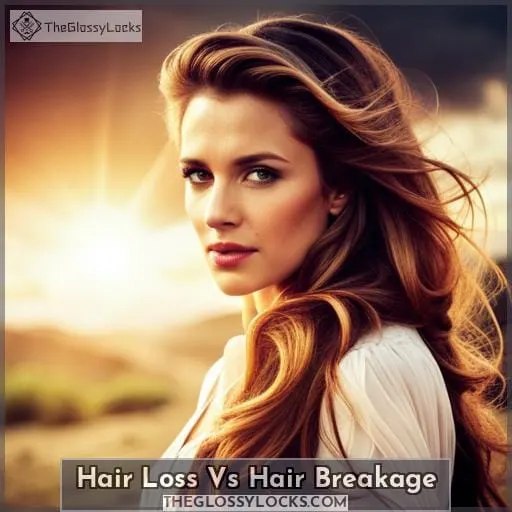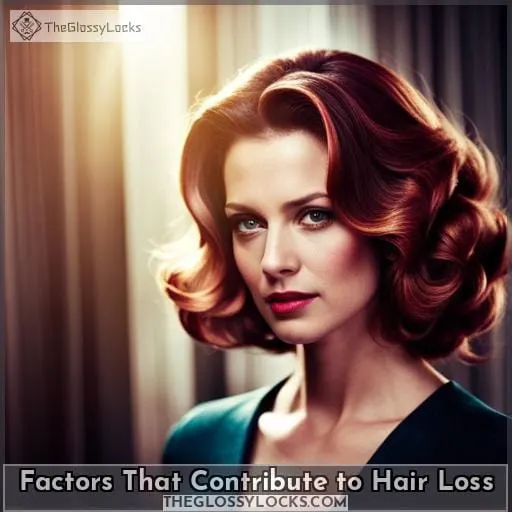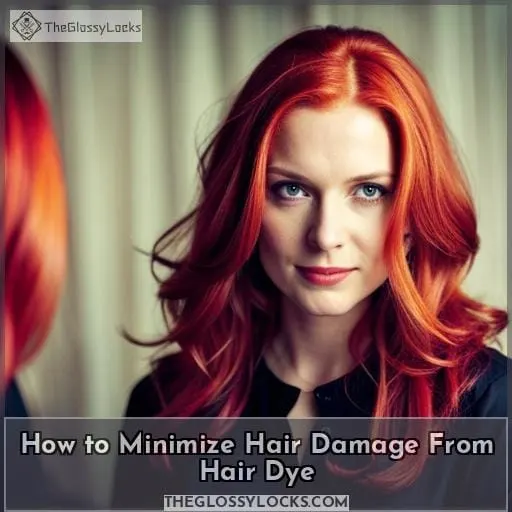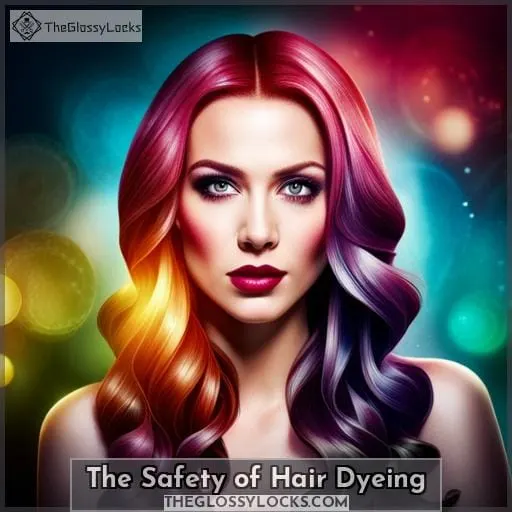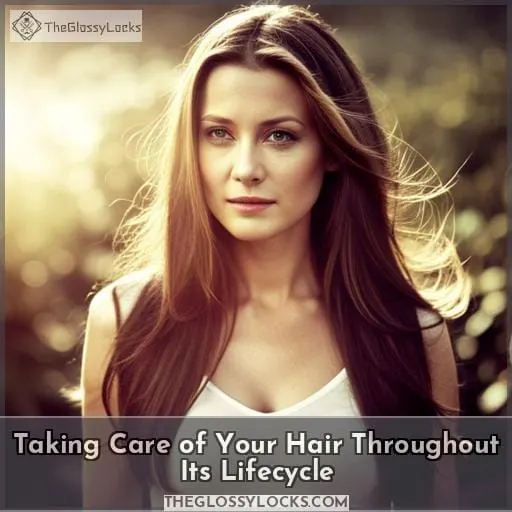This site is supported by our readers. We may earn a commission, at no cost to you, if you purchase through links.
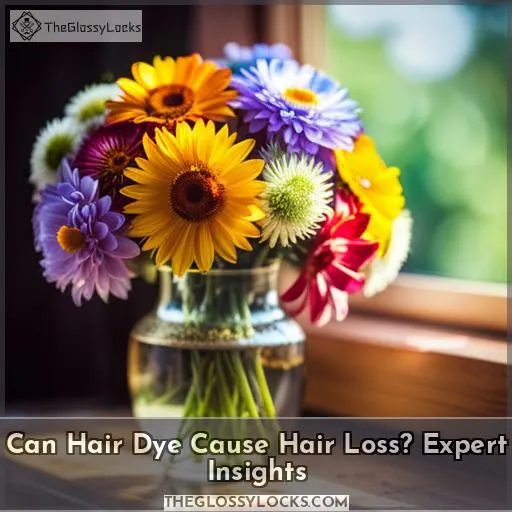 Are you concerned that hair dye might be causing your hair loss? It’s a valid concern for many of us, as we all want to protect our mane from any damage. While it’s true that chemical treatments may cause some breakage or thinning, the reality is more nuanced than simply hair dye causes hair loss.
Are you concerned that hair dye might be causing your hair loss? It’s a valid concern for many of us, as we all want to protect our mane from any damage. While it’s true that chemical treatments may cause some breakage or thinning, the reality is more nuanced than simply hair dye causes hair loss.
To understand why and how this could be happening, let’s delve into what experts have to say about the potential consequences of coloring your tresses.
Table Of Contents
Key Takeaways
- Hair dye can cause breakage and thinning, but it rarely leads to complete hair loss.
- Chemical reactions in hair dye can damage proteins and lipids, especially if used incorrectly.
- Ammonia and peroxide in permanent dyes weaken hair shafts and can cause damage that cannot be repaired.
- Proper application techniques and using quality hair dye products with fewer harsh chemicals are important to minimize breakage and damage.
Hair Loss Vs Hair Breakage
You may have heard about hair loss due to dyeing, but the real culprit is often breakage. Though not life-threatening, it can be a major frustration. Dyeing your hair involves chemical reactions that can damage the proteins and lipids in your strands if done incorrectly or too frequently.
To minimize this risk, use quality products and follow instructions carefully when coloring your hair. Semi-permanent colors are gentler on strands than permanent dyes because they don’t contain ammonia or hydrogen peroxide like their counterparts do.
Limiting treatments to every six weeks helps reduce shedding. Additionally, using color-safe shampoos and conditioners afterward provides extra protection against breakage related to dye jobs.
Using heat protectant sprays before styling also helps keep locks healthy while preventing further damage from hot tools such as straighteners or curlers after you’ve colored them! Taking proper care of dyed tresses will help maintain their health while protecting against potential breakage caused by harsh chemicals in some dyes – so approach with caution yet understanding for optimal results!
Can Hair Dye Cause Hair Loss?
When it comes to hair dye, it is important to understand both the ingredients used and how this can affect your hair. Certain chemicals found in permanent dyes, such as hydrogen peroxide and ammonia, can weaken the shafts of your hair and lead to breakage.
Telogen effluvium is a form of temporary hair loss that may be triggered by frequent use or misuse of hair care products like dyes.
Hair Dye Ingredients and Hair Damage
Using certain hair dye ingredients can lead to damage that weakens your strands, making them more prone to breakage. Commonly used chemicals in permanent dyes are ammonia and hydrogen peroxide, which strip natural pigments and proteins from the hair shafts.
Semi-permanent color products don’t contain alcohol or ammonia, so they cause less harm than permanent options. Limiting treatments to every six weeks should also help reduce shedding caused by mechanical manipulation during the application of the product itself.
The Role of Hair Dye in Telogen Effluvium
Frequent dyeing can trigger telogen effluvium, a form of hair shedding caused by an interruption in the hair growth cycle. During the telogen phase, follicles are completely at rest and susceptible to shock from external factors.
Hair dyes containing ammonia or peroxide damage proteins and lipids in strands, leading to breakage. This often results in thinning or even bald patches over time. Medical conditions like alopecia can also cause hair loss but should be addressed with professional medical treatment if necessary.
To prevent any serious damage, it is important to use quality products. Additionally, deep conditioners should be used post-coloring for maximum protection against side effects that could lead to noticeable shedding or complete loss of tresses over time.
Factors That Contribute to Hair Loss
Are you concerned about hair dye causing hair loss? Understandably, this is a common worry. There are various underlying medical conditions that can cause it. Improper application of the product or use of techniques that damage your strands and scalp can contribute to shedding as well.
Underlying Medical Conditions
It’s important to note that underlying medical conditions such as alopecia, thyroid disease, and anemia can cause hair loss and should be addressed by a doctor if unexplained. Hair dye alone is not likely to lead to complete baldness, but it may contribute to thinning or shedding.
Cancer treatments can also affect the hair follicles, leading to temporary or permanent changes in growth patterns. It’s essential for those experiencing abnormal amounts of shedding or thinning due to health concerns to seek professional help from a board-certified dermatologist immediately, who will provide necessary treatment options tailored specifically for their condition.
Improper Hair Dye Application and Techniques
When coloring your hair, improper application and techniques can lead to breakage, which could eventually result in thinning. To minimize damage: 1) blend colors when transitioning hues; 2) avoid stains with proper patch testing; 3) color fading is a risk – use root touch-ups as needed; 4) protect the scalp from harsh chemicals like ammonia.
Hair dye may weaken strands but cannot cause true hair loss unless the follicle itself is damaged or medically impaired. Take care of colored tresses by following instructions closely and using quality products for vibrant results without compromising health.
How to Minimize Hair Damage From Hair Dye
Choosing quality hair dye products and proper post-coloring care are essential for minimizing damage to your hair. Quality products contain fewer harsh chemicals that can weaken the hair shafts, while regular conditioning treatments can help reduce breakage and keep colored strands looking healthy.
Choosing Quality Hair Dye Products
To minimize hair damage from dye, opt for quality products that are free of harsh chemicals.
When selecting permanent hair color, consider a product with low levels of ammonia and peroxide as these can weaken the protein structure. Semi-permanent colors do not contain alcohol or ammonia and may be less damaging to color-treated hair than permanent options.
Pre-dye preparation, such as deep conditioning, is essential before applying any type of product. This helps protect against sensitivity reactions like allergies caused by ingredients found in dyes.
Aftercare is equally important. Use sulfate-free shampoo, conditioner, and heat protectant sprays while styling to help keep dyed strands healthy over time. This will minimize breakage and preserve color vibrancy longer, which are key elements in preventing premature fading often associated with poor quality products used carelessly or too frequently.
Proper Post-Coloring Hair Care
Properly caring for your hair post-coloring is key to preserving its health and avoiding breakage. To maintain color vibrancy and prevent fading, use sulfate-free shampoos that are specifically designed for colored hair.
A deep conditioning treatment helps nourish the strands while reinforcing strength.
Using a heat protectant spray can help reduce heat damage when styling dyed hair. It is also important to use a lower temperature setting on styling tools like straighteners or curling irons.
If you experience sudden changes in your natural coloring or have any other concerns related to dyeing safely at home, it is advisable to seek advice from board-certified dermatologists. Hormone imbalances, such as thyroid disease, may cause permanent loss of pigmentation.
The Safety of Hair Dyeing
It is important to understand the safety of hair dyeing if you want to protect your hair from damage. Consulting with a board-certified dermatologist and understanding your unique hair type and natural color are essential steps for minimizing any risks associated with coloring at home or in salons.
Consultation With a Dermatologist
For any hair and skin concerns, consulting a board-certified dermatologist is like having an expert guide to help you navigate your way through the dyeing process. Through remote prescriptions and video visits, they can prescribe medications or suggest treatments suited for individual needs in order to maintain hair health.
From color maintenance tips to damage prevention advice, a dermatologist consultation should be considered before embarking on the dyeing journey. They may also recommend products free of harsh chemicals that are specifically formulated for dyed hair while providing knowledge about common ingredients found in permanent dyes, such as ammonia and hydrogen peroxide, which have been known to weaken strands and lead to breakage over time.
Ultimately, this professional guidance will provide peace of mind as well as tangible benefits when it comes to protecting against potential damage from coloring services.
Understanding Hair Type and Natural Color
Considering your hair type and natural color is essential when deciding to dye your hair, as they can affect how much damage the process causes. Hair type variations range from fine and thin to coarse or curly, while natural color ranges from dark browns to light blondes.
Different coloring techniques are more suitable for each individual’s unique needs and require different frequencies of dyeing treatments. Keeping in mind that it’s important for maintaining healthy hair after undergoing a drastic change in hue, understanding skin condition also plays an important role before opting for permanent or semi-permanent coloration.
Taking Care of Your Hair Throughout Its Lifecycle
To maintain healthy hair and prevent damage, it’s important to understand the lifecycle of your strands and how different treatments can affect each stage.
On average, a single strand can last up to six years before being shed naturally. During this time, it goes through three distinct phases: anagen (growth), catagen (transition), and telogen (resting).
Hair dyeing involves heavy combing or rubbing that contributes to breakage in all stages of the cycle. While hair dye itself isn’t linked with permanent baldness or thinning, its chemicals, such as ammonia or hydrogen peroxide, may weaken strands leading to shedding if used too often.
Quality products are key for maintaining scalp health without excessive damage. Semi-permanent dyes lack alcohol and harsh chemicals, while limiting treatments should help minimize further stress on tresses.
During color maintenance routines, every 6 weeks is recommended for best outcomes – especially for those with fine/thin locks, which are more prone to harm from coloring agents than other types of manes!
Conclusion
Your hair is one of the most important features you have. From its growth, color, texture, and overall health, it’s essential that you take care of it properly. But when it comes to the question of can hair dye cause hair loss, the answer is not so simple.
Though hair dye can cause breakage and thinning, it is unlikely to cause complete hair loss. However, if you’re using permanent hair dye, chances are you could be damaging your hair. To reduce the risk of hair loss, it’s important to choose quality hair dye products and follow instructions carefully.
Additionally, medical conditions like alopecia, thyroid disease, or anemia should be discussed with a board-certified dermatologist. With proper precautions and understanding of the risks, hair dye can be used safely without worrying about hair loss.

